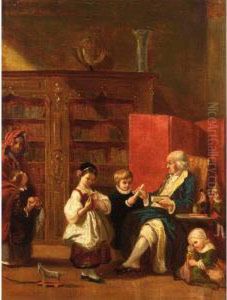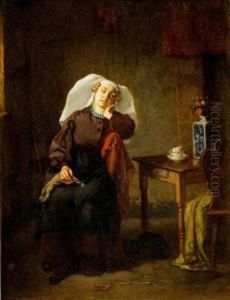Johannes Huybertus Van Hove Paintings
Johannes Huybertus van Hove was a Dutch painter, born on January 19, 1810, in The Hague, Netherlands. He was the son of Bartholomeus Johannes van Hove, who was also an accomplished painter and theatrical scenery designer. Johannes Huybertus followed in his father's footsteps, developing his artistic skills from a young age. He received his initial training from his father and later furthered his education at the Academy of Fine Arts in The Hague.
Throughout his career, Johannes Huybertus van Hove specialized in interior and genre paintings, portraying scenes with a meticulous attention to detail. His works often depicted church interiors, domestic settings, and historical buildings with an emphasis on the accurate representation of light and texture. He was known for his skillful use of chiaroscuro, the strong contrast between light and dark, to create depth and volume in his compositions.
Van Hove was active during a period in Dutch art history that was characterized by a revival of interest in the nation's artistic heritage, particularly the works of the Dutch Golden Age masters. He was part of the Romantic movement, which in the Netherlands focused on the glorification of the country's past and the beauty of its landscapes and cities.
In addition to his painting career, van Hove was also a respected art educator. He taught at the Hague Academy, where he influenced a generation of Dutch artists. His teaching focused on traditional techniques and the importance of draughtsmanship, which was a cornerstone of academic art training at the time.
Johannes Huybertus van Hove's contributions to Dutch art were significant during his lifetime, and his works were collected and admired. However, as with many artists of his era, his fame dwindled after his death on February 24, 1880. Today, he is recognized for his technical prowess and his role in the preservation of Dutch artistic traditions during the 19th century. His paintings can be found in various Dutch museums, including the Rijksmuseum in Amsterdam, serving as a testament to his artistic legacy.

